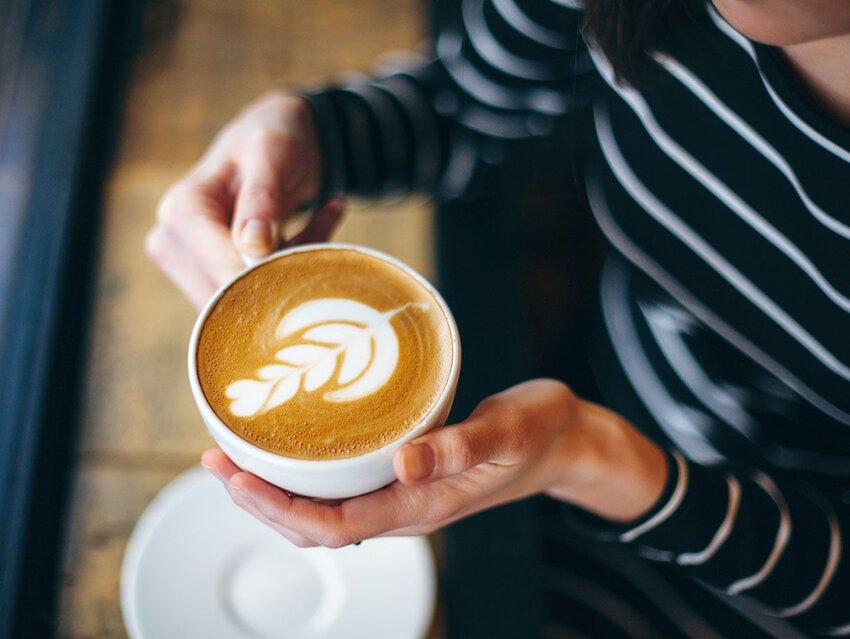Have you had a cup of coffee today? Possibly even a second or a third? Coffee is one of the most-consumed beverages in the world, and in the United States, seven out of 10 people drink coffee every week. It’s certainly popular in the U.S., but much of the language for your morning cup comes from around the globe. The English word “coffee” comes from the Italian caffè, which can be traced back to the Arabic word qahwah. And while a cup of coffee may be a part of your regular routine, coffeehouses have been around for centuries, and a special set of vernacular has developed around them. These drinks aren’t your average “cup of joe,” so check out some advanced coffee shop terms to improve your next java order.
Arabica
Arabica is one of the two main species of the Coffea plant (the other is robusta). Arabica is often the more popular choice because it is less bitter than its counterpart. Coffee “beans” are actually the seeds of the cherry-like fruit on the plant.
Breve
A caffè breve is a drink made with espresso and steamed half-and-half (half milk, half cream), which produces a heavy foam. In Italian, breve means “short.” This drink is essentially a fluffier version of a latte and is commonly served with dessert.
Cappuccino
If a coffee drink is made with steamed milk and espresso, it’s called either a “cappuccino” or a “latte,” but a cappuccino traditionally has more foam. Like so many other coffee terms, “cappuccino” comes from Italian. The drink got its name from Capuchin friars (16th-century Franciscan monks). The color of the frothed espresso was a similar color to the brown robes the monks wore.
Cortado
A cortado is a small, hot drink that is made with a 1:1 ratio of espresso and steamed milk. Mixing milk with espresso is popular in drinks across the world because it cuts down on acidity. The drink gets its name from the Spanish word cortar, meaning “to cut,” because the milk cuts through the espresso. What differentiates the cortado from other espresso and milk drinks is that it contains little to no foam; it’s all about the balance with the steamed milk. If this drink is instead made with foamed milk, it is called a “macchiato.”
Demitasse
This can refer to a small cup of black coffee as a whole, or just to the cup used to serve such a beverage. For example, “Let’s have a demitasse at the cafe before we buy a set of demitasse cups at the department store.” “Demitasse” comes from French, meaning “half cup,” and is a popular choice for serving espresso.
Doppio
This is the fancier, Italian way to order a double shot of espresso. The word doppio means “double” in Italian, and will get you twice the size of a standard shot of espresso. However, a 2-ounce serving of espresso is becoming the standard for most cafe-style drinks outside of Italy, so ask the barista (coffee preparer) what size they use.
Espresso con Panna
This tasty drink is espresso with cream. While whipped cream on all types of coffee is commonplace today, this is one of the most traditional types of espresso drinks. Espresso is served in a demitasse cup and topped with fresh whipped cream. It’s quite simple, but it remains popular — it’s still on the menu at Starbucks.
Frappé
There was an earlier French term, café frappé, that applied to any iced coffee drink, but the frappé was invented in the 1950s by a Nestlé sales rep at a convention in Greece. He combined the brand’s instant coffee with ice and cold water in a cocktail shaker, giving it a frothy consistency. It took off in coffeehouses around Europe, and today, a frappé is any type of sweet iced coffee beverage, blended or shaken together.
Lungo
A lungo is made from a long pull of espresso — its name fittingly comes from the Italian word for “long.” It’s made with the same amount of coffee grounds as a normal espresso shot, but twice as much water. This is similar to an Americano, which is one or two shots of espresso topped with water, making it more diluted than a lungo.
Mocha
Mocha coffee originated on the Arabian Peninsula, where “mocha” was the name for the coffee beans grown in Mocha, Yemen, which had a natural chocolate flavor. Today, a mocha drink at a coffee shop likely isn't brewed with beans from Mocha. Instead, a modern mocha is made with espresso, chocolate flavoring (syrup or powder), and steamed milk.
Ristretto
“Ristretto” is another way to order a shot of espresso (almost the opposite to “lungo”). It comes from Italian and means “restricted,” because the barista pulls only the first portion of the espresso shot. This results in a slightly smaller shot with a sweeter, richer flavor.
Robusta
This is the second main species of the Coffea plant. It is a less popular choice than Arabica because it is more bitter, but robusta does contain nearly twice as much caffeine, which is a boon for some coffee drinkers. By the numbers, robusta makes up about 40% of coffee grown worldwide.
Featured image credit: agrobacter/ iStock

